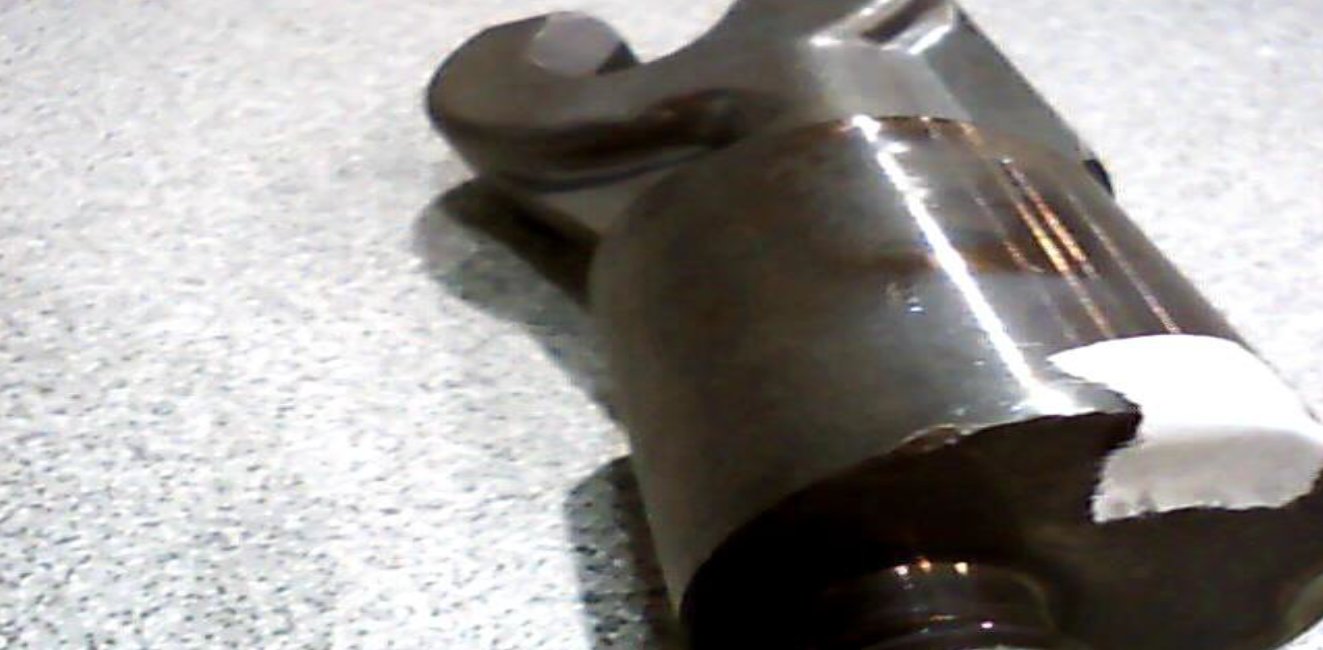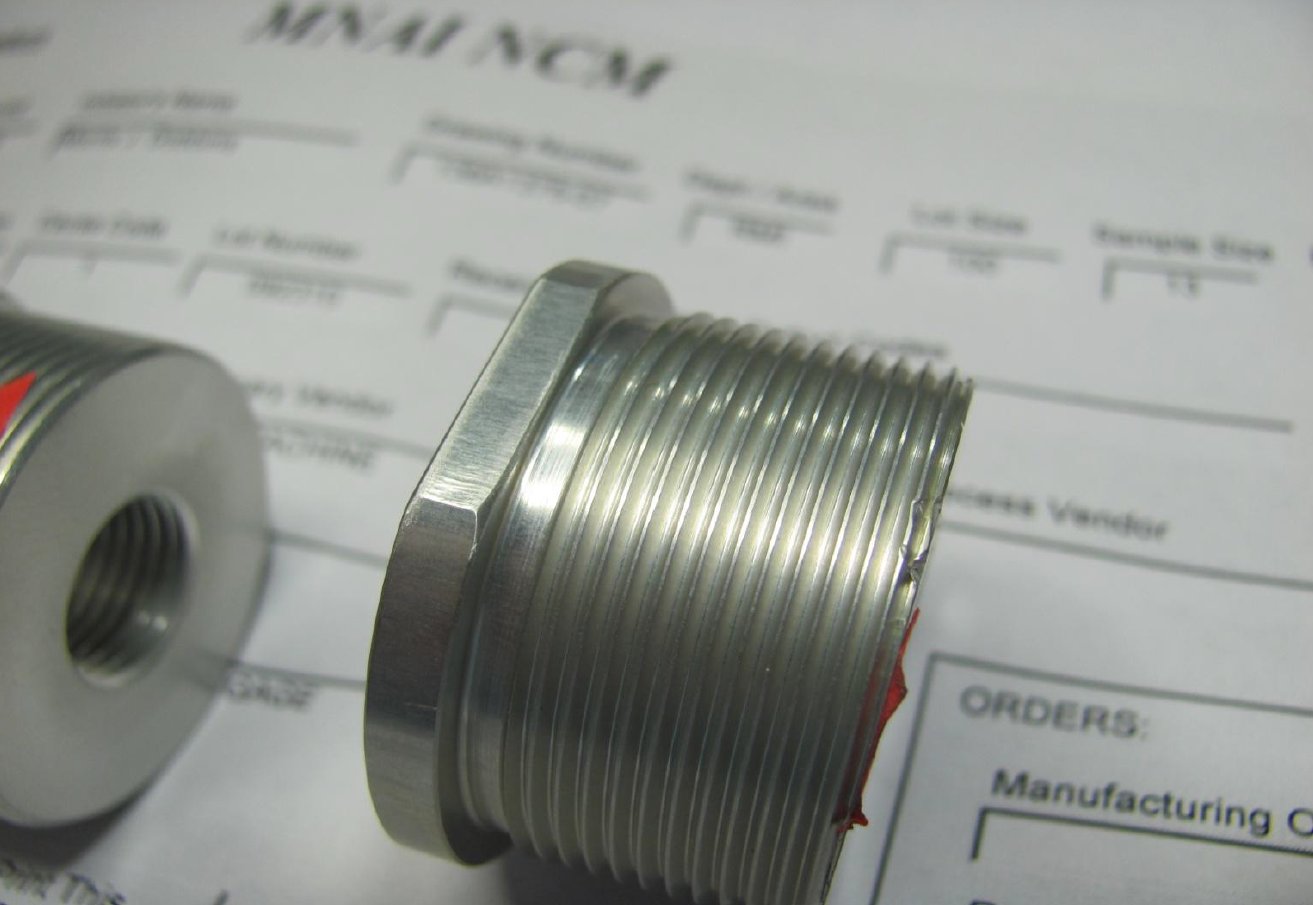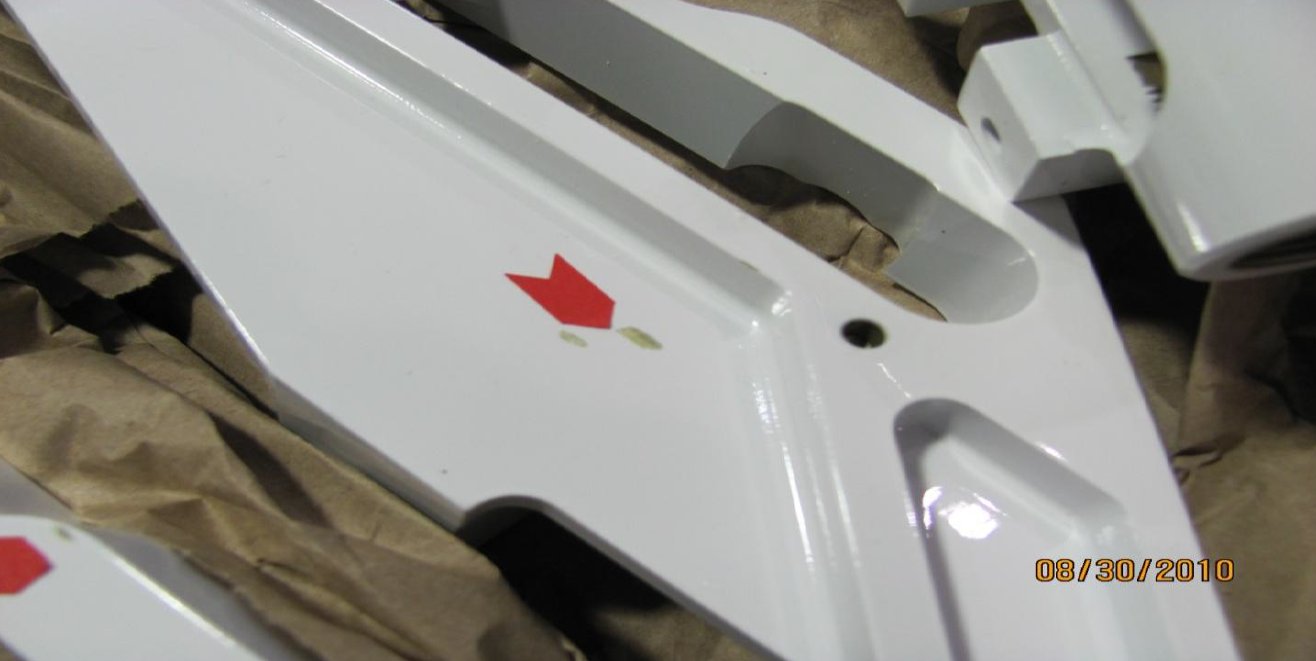
Alphabetical Index
Keyword Search
Casting Defects
Ingot Defects
Slab Defects
Drawing Defects
Forging Defects
Rolling Defects
Bearing Defects
Coating Defects
Corrosion defects
Fractography
Heat Treatment Defects
Machining Defects
Other Defects
Pipeline Defects
Polishing Defects
Rail Defects
Tool Steel Defects
Welding Defects
Internal Defects
New Records
Surface Defects
Contact Us
Help
Home
Examples of unacceptable surface finishes - Machining defects

Figure 1: Nick.

Figure 2: Cold working action and scratch
(part needs buffed to obtain uniform surface finish).

Figure 3: Nicks.

Figure 4: Nicks and dings on threads.

Figure 5: Gouges on paint.

Figure 6: Gouges on paint.
Defect name: No data.
Record No.: 3161
Type of defect (Internal/Surface): Surface
Defect classification: Machining defects
Steel name: Steel
Steel composition in weight %: No data.
Note: Definitions:
Abrasion: Surface imperfection that doesn’t remove or displace material appears as a
scuff or a change to the surface finish.
Buffing: Light polishing with a soft cloth or cloth wheel.
Burnishing: Light material rubbing; burnishing produces a “smoothing” of material and a shiny
outer surface. Material removal does not occur.
Burrs: Sharp edges around the part features, often caused by manufacturing processes like
punching, shearing, milling or drilling.
Dents and Dings: Any small, measurable depression in a part surface, often produced by
striking or pressing the surface.
Impressions: A mark or blemish made by pressure. An impression could be a ding or dent.
Nick: A slight cut, chip, or indentation on a surface or edge.
Polishing: To remove roughness from a surface and make it smooth by rubbing, with or without
compound.
Scratches: Lines or marks on a surface, often created by a sharp object. A scratch is defined as a
maximum of .003 in. in width, and by nature, a scratch involves the removal or
displacement of material.
Surface Imperfections and/or Flaws: Surface interruptions such as cracks, nicks, Dings, Dents,
scratches or ridges.
Surface Texture: Describes geometric irregularities of the surface of a solid material.
Swaging: A cold working process for shaping material, where material is forced into a die(s)
using continuous, repeated impacts.
Tooling Marks: Any marks that appear on the surface of a part as the result of a manufacturing
process, including, but not limited to: depressions, gouges, impressions, clamping marks,
etc.
Reference: Not shown in this demonstration version.